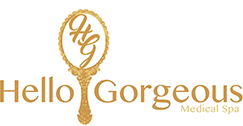PlasmaPen
Turn Back Time
PlasmaPen is an innovative, non-invasive, skin lifting, skin tightening, and rejuvenation device designed to combat wrinkles, loss of collagen, and sagging skin. PlasmaPen treatment is used to enhance skin around the eyes, cheeks, forehead, and lips, and other sensitive skin areas.
The PlasmaPen treatment may help improve and brighten skin tone, laxity, and texture. It is highly versatile and has been effective in smoothing out wrinkles and tightening the skin, lifting, and rejuvenating a variety of areas, including eyelids.
As we age, the dermal layer thins, and less collagen is produced which causes our skin to wrinkle and sag. The PlasmaPen and its fibroblasting technique are designed to dramatically repair, reverse, and mitigate these signs of aging.
PlasmaPen treatment is the only procedure other than plastic surgery that can be performed on the eyelids. With PlasmaPen treatment, no injectable anesthetic is required, and there are no scalpels, stitches, or sutures. This treatment has been shown to be very low risk with minimal side effects and very short downtime. The treatment feels like tiny pinpricks with a mild sensation of heat. The duration of the treatment may vary from a few minutes to an hour based on the size of the treatment area. Side effects may include redness, swelling, bruising, scabbing, and skin discoloration. Downtime may vary, but you may be uncomfortable with swelling, bruising, and scabbing for five to seven days.
Plasma Pen Treatment Areas:
The effects of the Plasma Pen last around three years, although results may be permanent.
The Advantages of PlasmaPen vs. Traditional Plastic Surgery Treatments:
